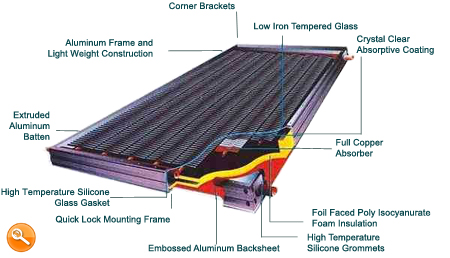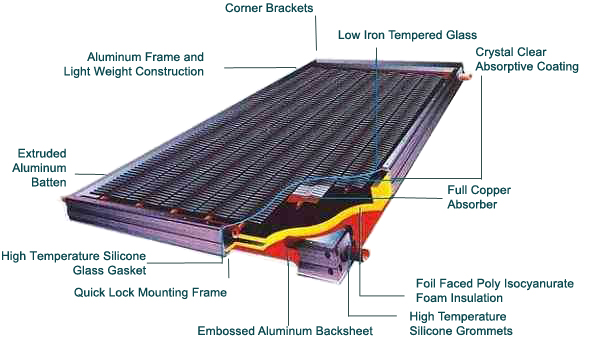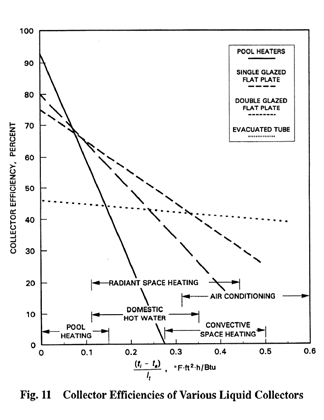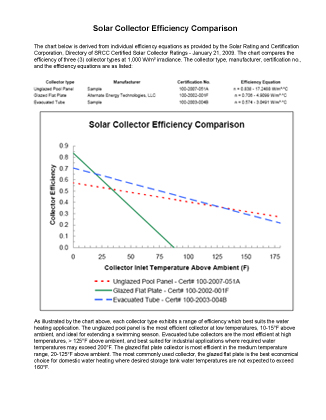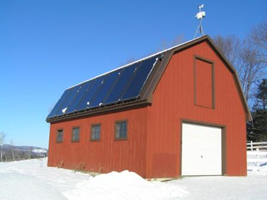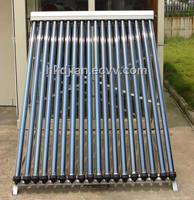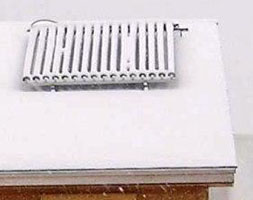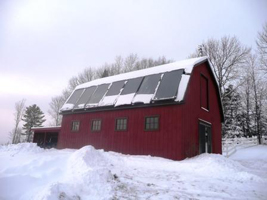Q: What is the best type of solar collector for my application?
|
|||
|
The most appropriate solar collector for a given application depends largely upon the operating temperature with respect to the ambient air. It can be convenient to divide solar collectors into three categories according to their operating temperatures: low temperature, medium temperature and high temperature. Then, it will be very important to select the right solar collector type for the project. We will see that in the design process of a solar heating system, it will be very important to operate the solar heating system at the lowest possible temperature. |
|||
|
The low temperature collector This type of collector operates at a temperature that is close to the outside ambient temperature. An example would be a solar swimming pool heater. The collector operates at temperatures in the 70s, and if we assume that the ambient temperatures are also in the 70s we can see that the solar collector has little or no heat to lose to the outside air. These solar collectors can be simple and low in cost as well as being highly efficient at their low operating temperatures. The problem with low temperature collectors is that once temperatures rise, there is nothing to keep the harvested solar heat within the system and it escapes to the outside air. The ASHRAE performance chart shows this problem well. Solar efficiency starts off very good, but as temperatures rise, it falls off severely. |
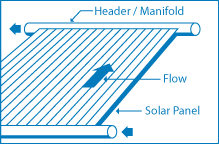
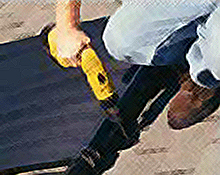
|
||
|
Medium temperature collectors |
|||
|
High temperature collectors These solar collectors use extensive measures to contain the harvested solar energy with the collector. These measures include placing the solar absorber plates within glass tubes that are evacuated of air so that conduction heat losses to the outside are nearly eliminated. But, there is a serious liability associated with this approach. Much of the available solar energy passes between the tubes and is not captured by anything at all. They are also very expensive. |
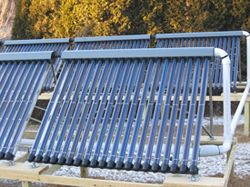
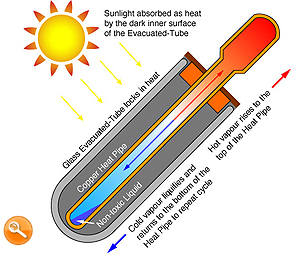 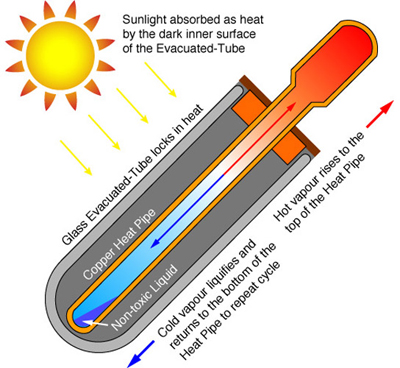
|
||
Here are two graphics of solar collector efficiencies from ASHRAE [The American Society of Heating and Refrigeration Engineers] and SRCC [The Solar Rating and Certification Corporation]. They both say the same thing and what they say is important. All solar collectors operate at best efficiency when they operate at lower temperature. For all solar collectors, when temperatures go up, their efficiency goes down. The simple, low cost, low technology collectors harvest more energy than the high tech collectors at modest temperatures. The evacuated tube solar collectors are only more productive at very high temperatures and they are less productive at the moderate temperatures that we should be working with. |
|||
|
There are other important considerations as well. Stagnation temperature - For overall safety and service life, we must consider stagnation temperatures. Stagnation is the condition where the collector is in full sun but there is no flow of heat transfer fluid to take the harvested solar energy away. Under this condition, the temperature of the collector will rise to the temperature where the heat loss from the collector to the ambient air will exactly match the incoming solar energy. (Efficiency is zero) This stagnation temperature can be very high with a high temperature collector. Every solar system must be designed so that no harm will occur under prolonged stagnation conditions. If a solar collector is capable of going to 500OF, then everything in the system must be able to withstand these conditions without damage. | |||
|
Net Solar Aperture Another issue is that evacuated tube solar collectors tend to have a poor "net solar aperture". Solar aperture is the actual amount of black absorber material that is available for the sun to shine upon. There is no real substitute for having an adequate amount of black absorber material exposed to the sun's energy.
The solar collectors on the left have good amount of net solar aperture whereas the evacuated tube solar collectors on the right do not. In the example on the right a considerable amount of solar energy passes right through gaps in the solar array and strikes the roof without entering the solar collectors at all. This type of solar collector will harvest a lesser amount of solar energy with respect to the gross surface area of the solar collector, but that lesser amount of energy will be well conserved within the evacuated tubes up to high operating temperatures. | |||
|
Snow Shedding The evacuated tubes do not shed snow well because they conserve the reduced amount of heat that does enter the collector. The snow must be removed manually causing inconvenience and risk of damage.
| |||
|
Loss of Vacuum Evacuated tube collectors rely on a vacuum for their improved efficiency at very high temperature. Reports from the field indicate that the vacuum is being lost after only a few years | |||
|
SUMMARY The evacuated tube solar collectors are very expensive and do not produce more useful heat at the temperatures that we should be working with. We must be careful to not confuse high temperature with high heat production. High technology is not automatically better than simplicity. A bathtub full of warm water contains more heat energy than a thimble of scalding hot water. There may be a place for these collectors where very high temperatures are required, but they are not the right product for this kind of work. | |||
Our solar technicians are always ready to answer questions.
Call 1-800-451-7593



